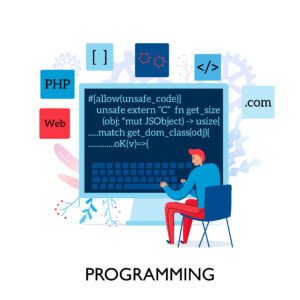Defining and implementing interfaces
In PHP programming, an interface is a combination of user-defined class parameters, methods, and return data type concepts, which helps the programmer define a set of classes in some custom steps. This involves applying a custom class object, which is provided in the implementation without any proper method. The interface concept in custom classes enables polymorphism features, where multiple custom classes in the program can adopt the same interface. This provides special interface features and capabilities to a class while maintaining flexibility.

What is an Interface in PHP Programming?
An interface in a PHP program is a user-defined method or signature, which defines a custom user-defined list of class method names, class parameters, and return data types. This must be implemented through any class by applying the interface. For example, a custom class interface does not provide any implementation for those steps.
Key points of an interface in PHP programming.
- An interface in a user-defined class only contains class declared method signatures.
- A class in the program that applies a custom class interface must implement all the method types defined in the interface defined in that class.
- A user-defined class can implement multiple user-created interfaces.
- Remember, a class interface cannot have properties or method implementations.
Defining a Class Interface in PHP Programming.
An interface in a user-defined class is created or defined using the `interface` keyword, followed by the name of the class interface created in the class and the method signatures defined or created.
Syntax for defining an interface in a PHP program.
interface InterfaceName {
public function methodName(); // define class Method signature
public function nextMethod($parameter); // declare next method signature in class
}
Implementing an interface in PHP programming.
To apply a user-defined interface in a class program, you need to apply the `implements` keyword in the class. After that, you need to provide a solid implementation for each class method defined in the interface method in the user-created custom class.
Syntax for implementing a custom interface in a class.
class ProgramClassName implements InterfaceName {
// Let’s define and implement the class methods defined in the class interface
public function methodName() {
// here class method implementation
}
public function nextMethod($parameter) {
// here next class method implementation
}
}
Important notes about interfaces.
- The method names, class parameters, and class visibility in a user-defined class should generally be the same as the public class interface.
- Multiple interfaces can be applied in a user-defined class by separating them with a comma operator.
Example of defining and implementing a class interface in PHP programming.
Define or create an interface in a user-defined class.
<?php
// here we implement the object interface in a class
class Circle implements object {
private $radius;
// here Constructor to initialize the radius
public function __construct($radius) {
$this->radius = $radius;
}
// here we are implementing the area class method
public function area() {
return pi() * $this->radius * $this->radius;
}
// here we are implementing the parameter class method
public function parameter () {
return 2 * pi() * $this->radius;
}
}
// here we create an object of the Circle class
$circle = new Circle(2);
// Display the area and parameter
echo “Display the Area of circle – ” . $circle->area() . “\n”;
echo “Display parameter of circle – ” . $circle-> parameter () . “\n”;
?>
Implementing a class interface explanation.
In this program, we have created a class interface named `object`, which has two custom class method signatures, such as the `area()` and ` parameter ()` functions. Here, the Circle class implements the object interface and provides a concrete implementation for the area() and parameter () methods.
The Circle class calculates the circle’s area and parameter based on the radius provided when creating the object.
Implementing Multiple Interfaces in a Class.
Multiple interfaces can be applied to a user-defined class. In this case, the user-defined class must provide implementations for all the class methods defined or created in each individual class interface.
Example of multiple interfaces in a user-defined class.
<?php
// Here we define or create the first class interface
interface design {
public function area();
public function parameter ();
}
// Here we define or create the second class interface
interface sketchable {
public function sketch();
}
// Here we implement both the first and second class interfaces in a class
class Rectangle implements design, sketchable {
private $height;
private $width;
// Here is the class constructor to initialize design dimensions
public function __construct($height, $width) {
$this->height = $height;
$this->width = $width;
}
// Here we implement the area method from the design class interface
public function area() {
return $this->height * $this->width;
}
// Here we implement the parameter method from the design class interface
public function parameter () {
return 2 * ($this->height + $this->width);
}
// Here we implement the sketch method from the sketchable interface
public function sketch() {
echo “Sketching a rectangle design \n “;
}
}
// Here we create an object of the Rectangle class
$rectangle = new Rectangle(3, 3);
echo “Display Area of rectangle – ” . $rectangle->area() . “\n”; // Result – Display Area of rectangle – 9
echo “Display parameter of rectangle – ” . $rectangle-> parameter () . “\n”; // Result – Display parameter of rectangle – 12
$rectangle->sketch(); // Result – Sketching a rectangle design
?>
Explanation of Implementing Multiple Interfaces.
- In this class program, the Rectangle class implements both the Design and sketchable custom class interfaces.
- The Rectangle class provides implementations for all the methods required by both the Design and sketchable interfaces, such as the area(), parameter (), and sketch() functions.



















































